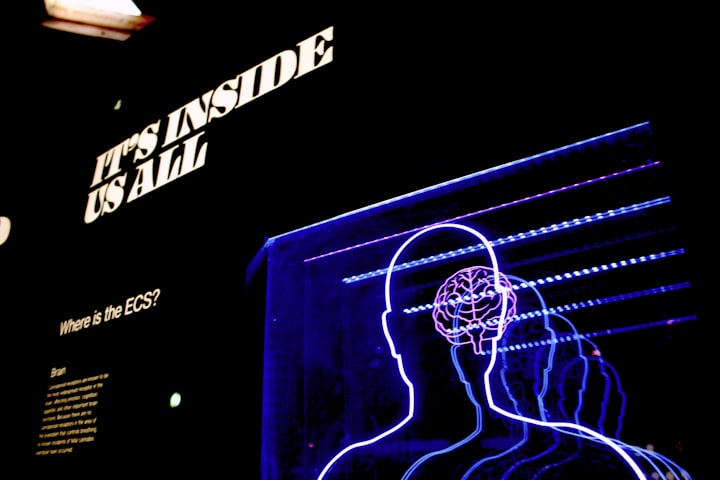What Happens To The Brain
What Happens In The Brain When We Are Afraid

What Happens In The Brain When We Are Afraid
The Science Behind One Of Our Primal Emotions Fear is one of our driving forces.
It can make us run faster, think more critically, and have way more strength than usual within mere seconds of spotting a threat.
It can also be paralyzing, however, or make us think irrationally in completely normal situations.
From goosebumps to phobias, the different processes we can go through when we are afraid are proof that this is one complicated emotion.
Here we try to break down what happens in our brains when we see danger and start being scared.

Fear Origins
As we mentioned before, fear is one of our primal emotions.
It's been hardwired in the brains of almost all species since the dawn of time.
It’s a very complex reaction that holds within it the simplest reflexes a snail has when something touches its antennas as well as the paralyzing anxieties some people have seemingly out of nowhere.
“Extreme” fear reactions, however, are usually what we think about when someone mentions fear.
These include surges of strength, critical thinking, and changes in the chemistry of our bodies and are only possible thanks to perhaps hundreds and thousands of years of evolution.

The Body’s Response
Usually, what happens when we get scared is our heart rate and blood flow increase, allowing for muscles to fill with blood and be ready to react.
The body also releases large doses of epinephrine and glucose, creating a pool of energy waiting to be used at a moment’s notice.
This is all in preparation for the immediate response we decide would be best and similar processes happen in almost all animals.
Funnily enough, goosebumps are also an evolutionary idea - the muscles at the base of each hair tighten, which makes it stand up - this has the purpose of changing the silhouette of the animal, making it look bigger and scarier.
A trick which we have kept through the centuries, regardless of the fact that it doesn’t change our physical appearance as much.
Where we differ from other species, however, is that we have evolved to achieve an alert state or even a fear response to certain written words and notes.
The first can be explained with an example of when we see a sign that says "dangerous road ahead" - we start being more careful, and our senses are sharpened - essentially achieving an alert state.
The second can be, for instance, when someone informs you that there is a flood - your heart rate speeds up, your muscles tense, and you immediately start thinking of how you can escape - this is the fear response.

How Our Brains React
Our answer to fear starts in a part of the brain called the ‘amygdala,’ which is a small cluster of nuclei right in the center of our brains.
It's responsible for our fight or flight reaction and readies our bodies for one of these two options by releasing different stress hormones and preparing motor functions.
Dilated pupils, increased heart rate, and redirection of stronger blood flow are all effects of what the amygdala does.
The amygdala also sends signals to the hypothalamus, which works with the hormonal and nervous systems.
This is how the body starts preparing the different chemicals and processes to react to the threat.
Some of the chemicals our bodies release when we are scared are similar to those we have when we are excited, which explains why some people enjoy extreme activities like bungee jumping for example.
The brain goes through most of the processes related to fear but realizes that the situation isn’t that threatening, so we don’t stay in a state of panic but instead enjoy the boost our bodies have.
This means the “sensible thinking'' part of our brains overpowers the primal automated response we have to threats, but we still get to experience the rush in the beginning.
This distinction is made by another very important part of our brains.
That is namely the hippocampus, which is highly active when we are afraid.
Its job is to figure out if the threat is as real as the amygdala deems it and control our response.
If our fear response isn’t justified, the hippocampus sends out a message to dampen the amygdala’s activity and calm us down.
Conclusion
Fear is complicated. It’s a part of almost all animals, and it’s the best thing to keep us safe in threatening situations.
This doesn’t mean, however, that fear is always rational, which is why our brains constantly go through different checking mechanisms to make sure the valuable energy we dedicate to different responses isn’t wasted.
How fear works can be separated into two main parts - when we are afraid, some processes are automated while others are our conscious decisions.
This divide allows us to control our emotions and reactions and escape the dangerous situation as quickly as possible.
Do you know other interesting things about fear?
About the Creator
Shola Sodiya
Copywriter, proofreader and travel writer for ethical,sustainable and purpose lead businesses. Sports enthusiast and researcher. #copywriter #proofreader #travel #sports #researcher






Comments
There are no comments for this story
Be the first to respond and start the conversation.